“Happy Birthday, Miss Jones”
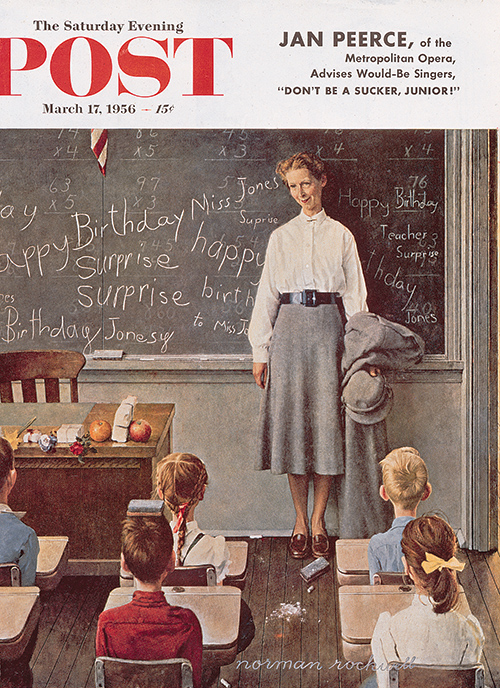
by Norman Rockwell
March 17, 1956
Rockwell arranged this “surprise” party for Miss Jones, of course. He posed the children in their seats and arranged the humble birthday gifts on the desk: an apple, an orange, a flower or two, and packages tied with string. I like the “Happy Birthday Jonesy” on the blackboard. Also the Rockwell details: an eraser and chalk dust on the floor indicate there was an eraser fight while waiting for the teacher to show up. The kid with the red shirt still has an eraser on his head.
But just as with the 1935 cover (below) of a teacher, Rockwell received complaints about how he portrayed teachers. Although a reader wrote that the artist captured “the full loving beauty of what is called ‘teaching’ in that sweet face,” another complained, why did he “make the schoolteacher so mousy looking”? Alas, even Norman Rockwell couldn’t please everyone.
“First Day of School”
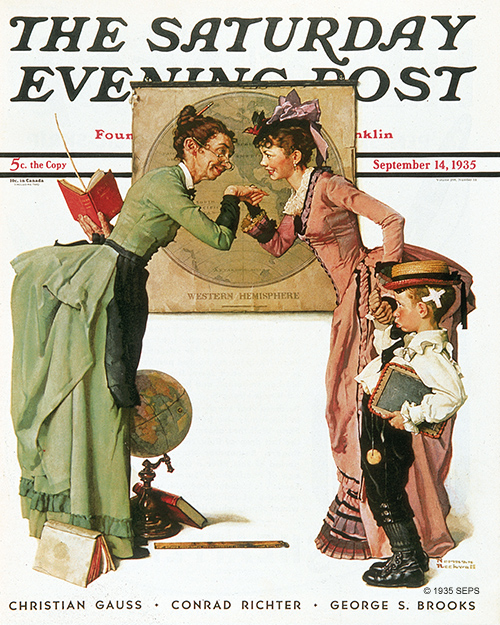
by Norman Rockwell
September 14, 1935
Rockwell loved costumes such as these 1870s dresses, but moved away from that since people just didn’t care for these covers as they did the modern covers that depicted everyday life and dress. The artist felt that every schoolteacher in the country complained about how homely he made this schoolmarm. One must observe that the contrast with the friendly, pretty mother is significant. One might also think the teacher may seem a little eager to use that stick behind her back for any errant behavior. The pupil with his “boys-will-be-boys” bandage may have met his match.
“After School”
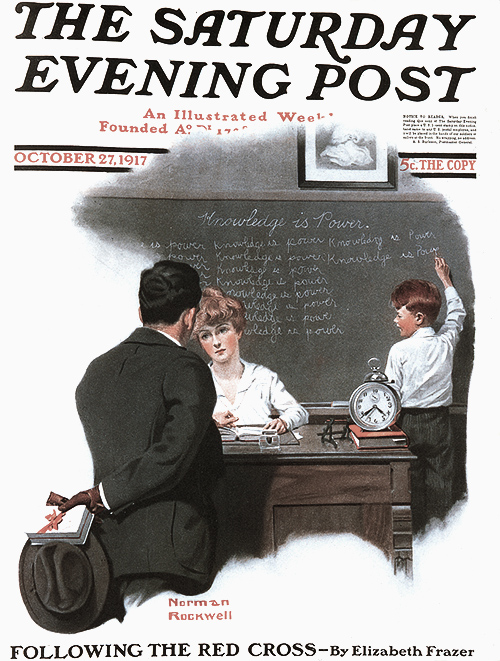
by Norman Rockwell
October 27, 1917
Back in 1917, Rockwell painted a very attractive teacher. The boy has to stay after school and write, “Knowledge is Power” on the blackboard an infinite number of times for some misdeed. It appears the student has acquired some unintended knowledge. A suitor (notice the box of candy behind his back) calling on a schoolmistress was juicy stuff indeed.
“First in His Class”
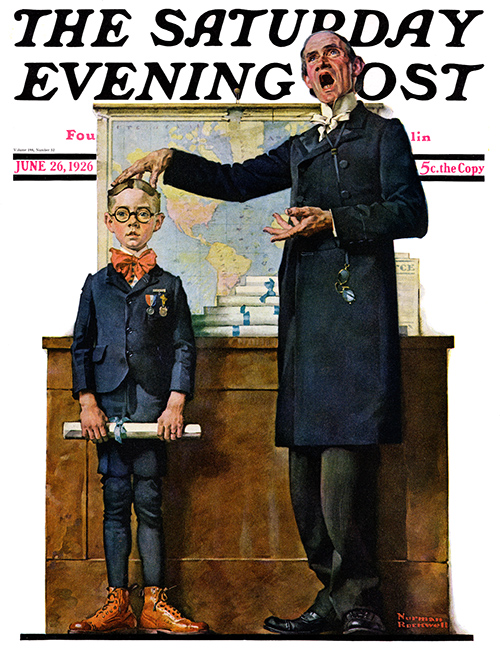
by Norman Rockwell
June 6, 1926
Rockwell was not terribly fond of school himself, which was perhaps why he depicted this young scholar as a nerd. To have the schoolmaster drone on and on about your intellectual achievements? I suspect Rockwell would have preferred having to write something on the chalkboard a bazillion times.
Become a Saturday Evening Post member and enjoy unlimited access. Subscribe now
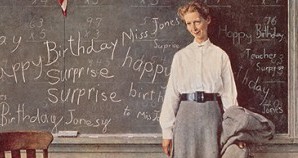
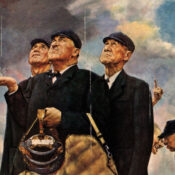

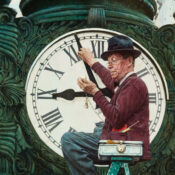
Comments
Loved the pictures. My own education actually went from a “one-room-school house” to a relatively modern college campus. Fondly remember all of it. It was just as depicted.
These are great! I had not noticed the eraser on the boy’s head in the classroom. Too funny!!
Love the Rockwell paintings. So many details.
I love the work of Norman Rockwell. It seemed so easy to us who view it. He truly worked at his art.
I can’t get enough of him.
Love your cover feature (and selections) this week. I realize my first impression of ‘After School’ was incorrect, thinking the man was the boy’s Dad possibly trying to bribe the teacher to “forget” about his misdeed with a box of chocolates (?)
Now I know he was a potential suitor who was trying to get the schoolmistress to go out with him. He seemed to know knowledge is power too, taking the form of candy in this case. Did it work? I guess we’ll never know.
Those who felt the teachers were being portrayed as rather dried up either didn’t know or had forgotten that in the old days, teachers who married were no longer allowed to teach school. The prettier women were wooed away from their jobs. Those who were less well favored stayed to teach and frequently support their parents for years. The thought behind it all was that if a woman married and still worked, she was taking a job that a man might need to support a family.
Oh! I just loved to see these paintings! What a talent! And what fun to share with kids and grandkids about by-gone days and memories. Thank you for sharing with us! 🙂
For the most part I detested school. Being forced to do something was never in my nature. Fortunately there were a few Miss Jones’ in my life, they made me become astudent of learning that continues to this day. My passion for reading especially good literatue and well written articles has never ceases after 60 years. Thank you Miss Covello and Miss Murphy whereever you are.